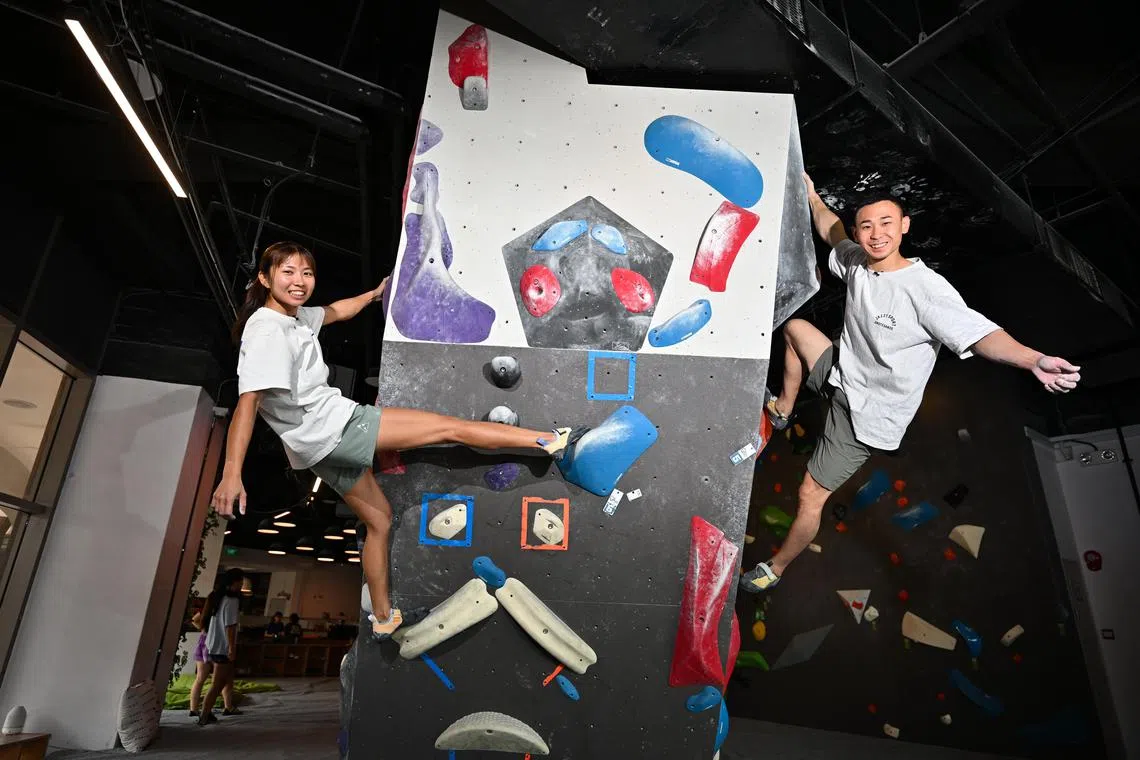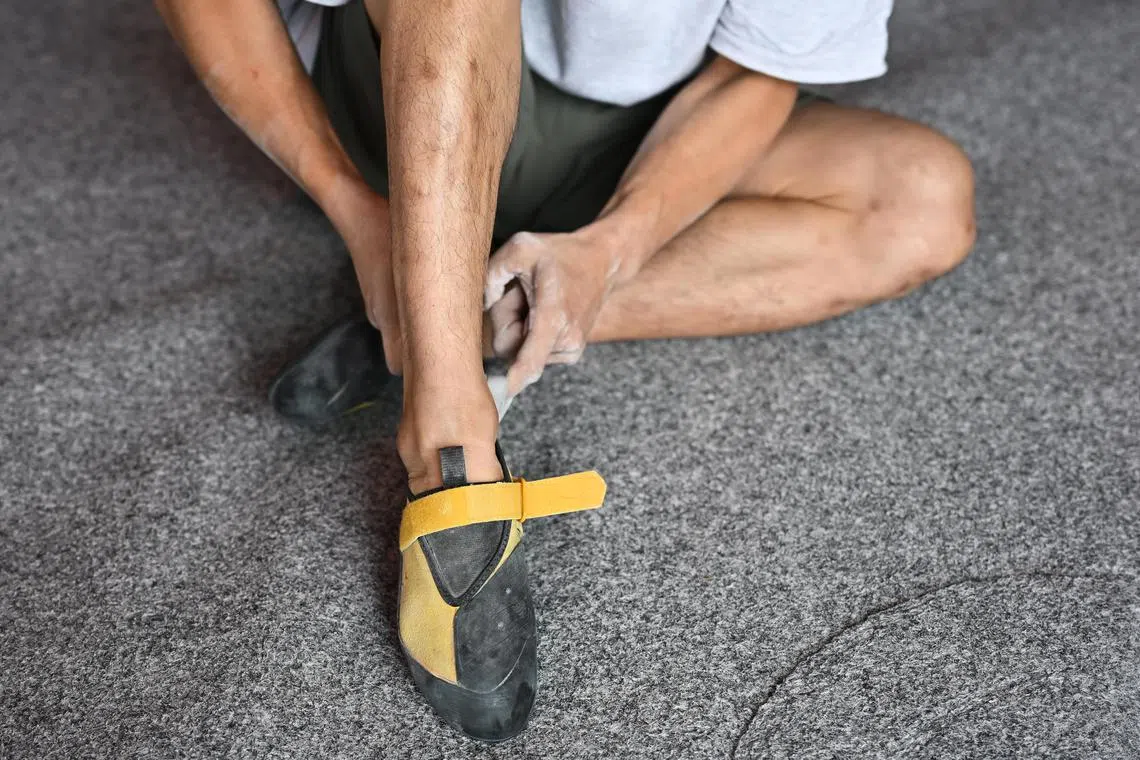ST Sports’ Play of the Month – Bouldering
In a special series, Play of the Month, The Sunday Times’ sports desk will dive into a sport. Every month this year, an expert in a sport will provide tips for readers. The August spotlight is on bouldering.
Sign up now: Get ST's newsletters delivered to your inbox

Climbing coaches Lynnette Koh and Dennis Chua are quick to highlight the importance of learning how to fall to minimise injuries.
ST PHOTO: LIM YAOHUI
Follow topic:
SINGAPORE – Sport climbing used to be a niche sport but, with films like Free Solo and Hollywood actor Tom Cruise’s cliff-climbing scene in Mission Impossible 2, it has piqued more interest.
With the sport entering the mainstream, not only are more climbing gyms opening, but more Singaporeans are also travelling abroad to scale greater heights.
There are three disciplines in sport climbing – speed, boulder and lead – with the sport making its second Olympic appearance at Paris 2024 three years after its debut in Tokyo.
Bouldering is a form of free climbing on small rock formations or artificial rock walls without the use of ropes or harnesses, although most climbers use chalk and climbing shoes for better grip.
Freelance coaches and national athletes Lynnette Koh and Dennis Chua, who have been climbing for over a decade, have stayed in the sport for different reasons.

Bouldering coach Dennis Chua started climbing when he was 17 and is now part of the national team.
ST PHOTO: LIM YAOHUI
Koh, 30, was first exposed to the sport during an outdoor camp in Secondary 1, before officially joining her school’s co-curricular activity group the following year. It then became an avenue for her to be socially active.
Chua took up climbing because he had wanted to try a different sport and stayed because of the community. The 32-year-old added: “Climbing in general is constantly different, you don’t do the same thing over and over again.”
He feels that everybody can do this sport at a recreational level, since bouldering can be done alone, unlike rock climbing, where a belaying partner is needed.
While the risk of serious accidents from falling during bouldering is low, as most of its walls are four to five metres high and there is also a crashpad, both are quick to highlight the importance of learning how to fall to minimise injuries.
Drawing from her experience while bouldering, Koh said: “I broke my wrist and I now have a metal plate and screws (in it).
“I was going for the last move on route, and I swung out and fell with my hands outstretched, which is a bad way to fall. When you have no control of your fall, this happens.”
She advises climbers to land with their legs bent and, if need be, roll on their butt and back to minimise injuries.
Koh added: “The natural instinct is to stretch out your arms to break the fall, but instead you should keep your hands close to your chest.”

Lynnette Koh warns of the risk of climbing, having broken her wrist from bouldering.
ST PHOTO: LIM YAOHUI
Chua concurred, adding that mastering how to fall is important because “as you get better, you will naturally want to try more difficult stuff, and that involves more risk”.
Globally, there are more than 25 million people active in sports climbing. In Singapore, there are over 20 member clubs that are partnered with the Singapore Sport Climbing and Mountaineering Federation.

Climbing shoes often used in bouldering.
ST PHOTO: LIM YAOHUI
Koh’s love affair with climbing has seen her travel to countries such as China, Indonesia and the United States.
On one of her such trips to Fontainebleau, France, it also led to another chapter of a love story.
After climbing up a short boulder, a shiny piece of rock was awaiting her, in the hands of her boyfriend.
“The sport has brought me to a lot of beautiful places, but the most memorable moment was when I finished the boulder and my now-husband proposed to me at the top and it was something quite special,” she said.
Three tips from a pro
Work on route reading – Reading a route is just as important as having the physical strength to climb up the wall. Beginners find themselves holding onto a foothold instead of the handholds because they did not read the route beforehand.
Do not pull with your arms – You should think about climbing up and pulling later, starting the movement with your lower body. Focus on your hips and let your body move together as one, consider focusing on using your toes to step as compared to using your entire foot.
Learning to fall – Try to keep your legs bent when landing and, if need be, roll on your butt and back to minimise injuries. You should also keep your hands close to your chest, as people would instinctively stretch out their arms when falling.
Fun fact:
Bouldering is like solving a puzzle, each problem requires both physical strength and mental strategy, as climbers must figure out the best sequence of moves to reach the top.

